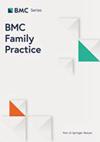Patterns of knee osteoarthritis management in general practice: a retrospective cohort study using electronic health records
IF 3.2
3区 医学
Q1 MEDICINE, GENERAL & INTERNAL
引用次数: 0
Abstract
This study determined patterns of knee osteoarthritis (OA) management by general practitioners (GPs) using routine healthcare data from Dutch general practices from 2011 to 2019. A retrospective cohort study was conducted using the Integrated Primary Care Information database between 2011 and 2019. Electronic health records (EHRs) of n = 750 randomly selected knee OA patients (with either codified or narrative diagnosis) were reviewed against eligibility criteria and n = 503 patients were included. Recorded information was extracted on GPs’ management from six months before to three years after diagnosis and patterns of management were analysed. An X-ray referral was the most widely recorded management modality (63.2%). The next most widely recorded management modalities were a referral to secondary care (56.1%) and medication prescription or advice (48.3%). Records of recommendation of/referral to other primary care practitioners (e.g. physiotherapists) were found in only one third of the patients. Advice to lose weight was least common (1.2%). Records of medication prescriptions or recommendation of/referral to other primary care practitioners were found more frequently in patients with an X-ray referral compared to patients without, while records of secondary care referrals were found less frequently. Records of an X-ray referral were often found in narratively diagnosed knee OA patients before GPs recorded a code for knee OA in their EHR. These findings emphasize the importance of better implementing non-surgical management of knee OA in general practice and on initiatives for reducing the overuse of X-rays for diagnosing knee OA in general practice.全科医生的膝关节骨性关节炎管理模式:利用电子健康记录进行的回顾性队列研究
本研究利用2011年至2019年荷兰全科医生(GP)的常规医疗保健数据,确定了全科医生(GP)对膝关节骨性关节炎(OA)的管理模式。2011年至2019年期间,我们利用综合初级保健信息数据库开展了一项回顾性队列研究。根据资格标准审查了随机抽取的n = 750名膝关节OA患者的电子健康记录(EHR)(有编码或叙述性诊断),共纳入n = 503名患者。提取了全科医生从诊断前六个月到诊断后三年的管理记录信息,并对管理模式进行了分析。X光转诊是记录最多的管理模式(63.2%)。其次是转诊至二级医疗机构(56.1%)和药物处方或建议(48.3%)。只有三分之一的患者记录了推荐/转诊给其他初级保健医生(如物理治疗师)。减肥建议最少见(1.2%)。与没有 X 光转诊记录的患者相比,有 X 光转诊记录的患者中发现药物处方或建议/转诊给其他初级保健医生的情况更多,而发现二级保健转诊记录的情况较少。在全科医生在电子病历中记录膝关节OA代码之前,通常会在叙述性诊断的膝关节OA患者中发现X光转诊记录。这些发现强调了在全科医生中更好地实施膝关节OA非手术治疗以及减少全科医生过度使用X光诊断膝关节OA的重要性。
本文章由计算机程序翻译,如有差异,请以英文原文为准。
求助全文
约1分钟内获得全文
求助全文
来源期刊

BMC Family Practice
医学-医学:内科
CiteScore
3.20
自引率
0.00%
发文量
0
审稿时长
4-8 weeks
期刊介绍:
BMC Family Practice is an open access, peer-reviewed journal that considers articles on all aspects of primary health care research. The journal has a special focus on clinical decision making and management, continuing professional education, service utilization, needs and demand, and the organization and delivery of primary care and care in the community.
 求助内容:
求助内容: 应助结果提醒方式:
应助结果提醒方式:


